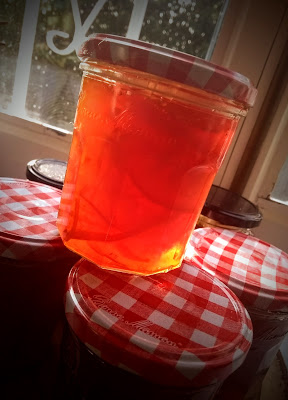On my courses
I get many questions about taking photographing food indoors using
ambient light in the evening. I teach how the best way to take pictures
of food, controlling the light either in the studio or in your home.
This week at home my wife said to me " I am making marmalade do you
want to take some pictures?" It was in the evening, and I had just
settled down on the sofa. I reluctantly followed her into the kitchen
and recognised the problem that many people have when photographing
their food at home, in the kitchen at night. Lots of bright and harsh
kitchen lights. I reduced the lighting so only a single oven hood light
illuminated the kitchen work top. The scene was dramatic and created
lots of good deep shadows. Next I set my smart phone camera to a high
ISO setting to try and avoid camera shake, and took some photos
 |
| Photo 1 |
Photo 1, The marmalade was boiling merrily away in the preserving pan,
but my problem was that steam was fogging my lens. I experimented with
taking the picture quickly and changing my angle until I got my
favourite shot.
 |
| Photo 2 |
 Photo 2, my wife stirred the mixture which inspired me to photograph
the orange peel on the the ladle, again different angles created a
different light. I did not like too much mixture on the spoon so made
sure my final picture had a the right amount.
Photo 2, my wife stirred the mixture which inspired me to photograph
the orange peel on the the ladle, again different angles created a
different light. I did not like too much mixture on the spoon so made
sure my final picture had a the right amount. 
 |
| Photo 3 |
Photo 3, the kitchen surface was full of empty glass jars ready for filling and initially I wanted to get a shot of pouring the marmalade into the jars and tried different angles and variations. In the end I decided that the light direction and the angle of the ladle just wasn't working, on a shoot I would try a different position and set up to achieve the shot I wanted, but being an informal evening picture taking session it was not appropriate so I re thought my idea and decided that a simple still life with the jars filled worked the best.
 |
| Photo 4 |
So things to work out when photographing in kitchens at night.
1. Keep the lighting simple and position yourself to avoid and flare or ugly highlights
2. Experiment with camera angles and composition to create simple but strong photos
3. keep an open mind and be ready when the sun is out.
Have fun with your photography





Comments
Post a Comment